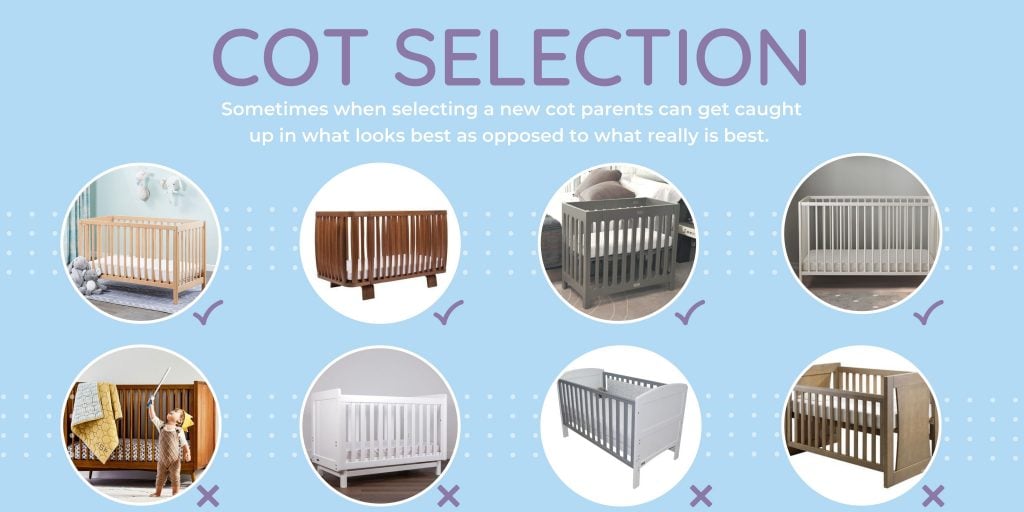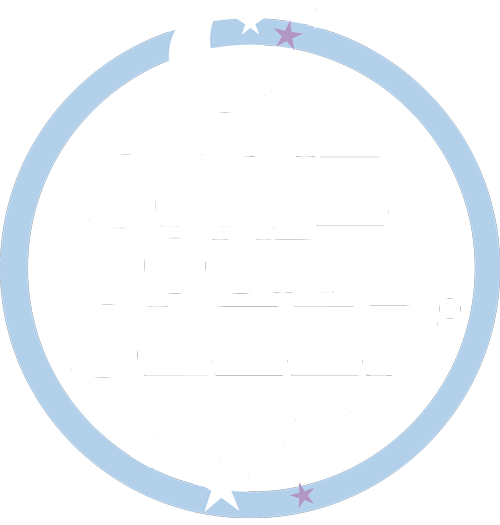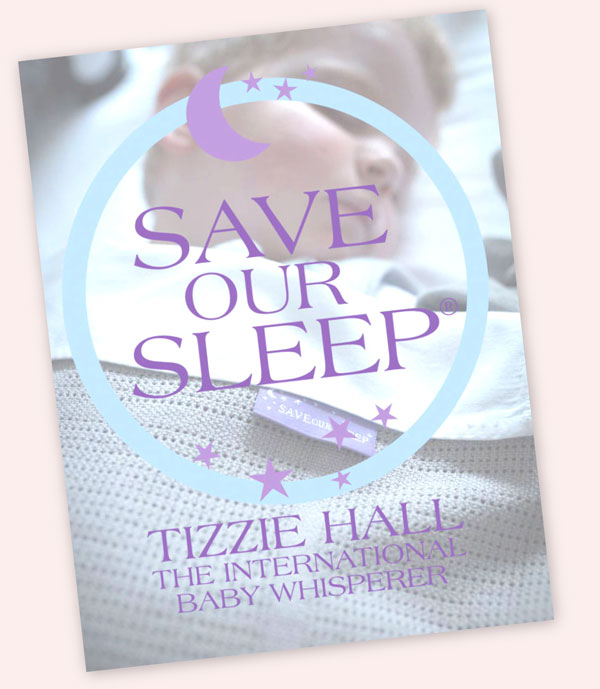Every parent would like the best for their baby. But is it really necessary to spend $1000+ on a cot?
Often a lot of thought goes into the cot, but little is given to the mattress the baby will sleep on. I believe the mattress is more important than the cot.
The mattress your baby sleeps on should be the same as an adult’s mattress, simply smaller. The mattress should be made from high quality materials, have very good springs and provide good support. It should be made in the country you live in to keep it safe from nasty chemical in might come across during export and import.
Just because a cot comes with a mattress, does not mean that mattress is suitable for your baby. Many large baby stores make their own mattresses and put them into the cots, making it seem like that’s the mattress that you have to use. This is not the case so please do not fall into this trap. I have done the hard work for you when it comes to buying the best quality mattress for your baby by designing my own. Here is a link to my range of baby and child mattresses.
If you are not sure where to spend your money when it comes to cots and mattresses, I would recommend buying a cheaper cot and a better quality mattress. The colour of your cot won’t matter to your baby, but the quality of the mattress will. Invest your money in the mattress not the cot.
Test to see if the mattress is firm and comfortable, not lumpy or too soft. If you can feel the springs, then so will your baby, and they will not sleep well. To test if the mattress is firm enough for your baby or toddler to sleep on do the “safe hand test”. Press your hand down on the mattress and when you lift your hand up if your handprint is there the surface is not a safe sleeping surface for a baby or toddler.
Keep this in mind when setting up sleeping spaces for your baby on a budget, in the grandparents home, family day care or even if you are having another baby close in age. The IKEA cot can be used with my mattresses while saving you a little bit of money and giving you the safest space for your baby or toddler to sleep.

It is very important that the air can circulate freely around your baby while they sleep.
There are all sorts of baby bed options out there these days, but I prefer full-barred mini cribs, which are the most recent addition to the baby market. I believe mini cribs are safer than moses baskets/bassinets because they provide better airflow. Most moses baskets/bassinets do not provide enough airflow around your baby. Mini cribs can be used for longer because they are bigger and most have the option of getting a good-quality mattress. Often, moses baskets/bassinets come with a thin foam mattress which is uncomfortable for a baby to sleep on. Although too small for a full-time bed, mini cribs can be used for older babies and toddlers if they are ill and you would like to have them sleeping next to your bed so you can rest while looking after them. If you are using the mini crib for an older sick baby or toddler, please remember to have the base at the lowest setting so your child can’t fall out.
If you are planning to have more children in a short space of time, your first baby could be still using his cot when the second baby comes along. So having a mini crib as well as a cot may mean there is no need to purchase a second cot or to move your toddler out of his cot before he is ready. In this case, buying a mini crib for baby number one is a more economical option.
If you have a large budget, I recommend starting your baby in a mini crib then moving her into a regular-sized cot by eight months. However, if you are on a tight budget, there is also no reason not to put your baby straight into a cot. If your baby is swaddled as I recommend, she will be quite happy to sleep in a big cot, and if you choose not to swaddle then the cot is also a better option because she won’t wake herself by touching the sides as she might in the mini crib. Please be aware that I recommend you swaddle your baby from birth until they are showing signs of being able to roll while swaddled. For further information on why I recommend swaddling please my book Save Our Sleep.
When purchasing a cot, there are a couple of things I recommend you look closely at. Look very carefully at the height between the top of the mattress and the top of the guardrail. Your baby will be a toddler before you know it and you may regret your choice when she starts to climb out! Cots are adjustable so you will need to ask the shop to put them at the lowest setting and compare a few – there can be quite a difference between brands. I also only recommend cots that are slatted all the way around so as to maintain maximum airflow. I do not recommend cots that have solid ends, as new research is showing restricted airflow might be a factor in the number of SIDS and SUDI deaths. If you have a cot with a solid end and you put the slatted side against the nursery wall you will restrict the airflow even more.
There are more fixed-side cots on the market which are safer so, when possible, try to purchase a fixed-side cot instead of a drop-side cot. If one side of the cot does drop down, make sure it drops down with a two-handed dropping mechanism. This way only an adult can release the side to make it drop. Do not purchase a cot where you have to push against the side to make the side drop down because, in time, this can cause a gap between the cot side and the mattress which may trap your baby.
There are several items that I do not recommend your baby sleep in. Cots and some mini cribs are required to meet strict safety guidelines before they can be sold in Australia. However, there are no such guidelines for moses baskets/bassinets so the risk of a sleep accident is increased if your baby is sleeping in a bed that has not met strict safety guidelines.
Similarly, I do not recommend hammocks or SNOOs as beds. Like moses baskets/bassinets, hammocks and SNOOs do not have to meet strict safety guidelines before they can be sold to parents and do not provide enough airflow around your baby. Hammocks can be easily knocked over or moved while your baby is in them, which is not safe. In my experience, it is also very difficult to transition a hammock-sleeping baby to a cot. Research shows that babies following the Save Our Sleep routines do not sleep well in a SNOOs.
Swinging cribs are nice to look at but there is a temptation to rock them and rocking can quickly become a sleep aid. They are also dangerous if they are rocked without your supervision because your baby could slip down the side of the crib and become trapped.
Toddler beds
Think twice before being talked into buying a cot that turns into a toddler bed. Not that there’s anything wrong with them, just don’t let that be the reason for making your choice. There are several reasons why taking the side off your toddler’s cot is not a feature I would recommend you use, and these are:
By the time your baby is a toddler you may have another baby or a baby on the way so you will want your older child to graduate to a normal bed and free the cot up for the baby.
A toddler needs to be gradually introduced into sleeping in a normal bed. Taking the sides off a cot suddenly can cause a toddler to feel insecure. You might find your toddler sleeps in the cot-bed for a few nights but then starts to cry or get out. Or you might find your toddler is happy in the cot-bed for 6 weeks and then decides to test the boundaries and gets out.
Or you might simply want to follow my transition from cot-to-bed advice, which is impossible to follow if you have taken the sides off the cot.
To help your child make the transition to a new big bed, set it up in your toddler’s room and to help her feel secure, sit on it with her at different points throughout the day and read stories. Once she is comfortable with the new bed as a place to sit and hang out then suggest she have her daytime sleep in it. Point out that she is a big girl now and this means that she should sleep in a big bed like Mummy, Daddy, siblings or friends she may have.
If she’s not ready on the first day, try gentle persuasion but if that meets strong resistance let her go back to the cot and try again the next day or so. Now picture trying to do this with a cot-bed – you would be putting the sides on and off.
Make the big bed a fun place – not somewhere for punishment or scary stories. Once she has had a good daytime sleep in the new bed, allow her to start having her night-time sleeps in it as well.
I suggest the cot stays in your child’s room and is available for her to use for at least 8 weeks after she starts to sleep in the bed at night. The reason I say this is, in my experience, most children are happy in the new big bed for 6 weeks and then they decide to test the boundaries. You will need the cot available to get over this hurdle. Again, if you are using a cot-bed, this means back on with the sides.
When she decides she is ready to sleep in the big bed in the day and at night as well, you will need to explain to her she can try and sleep in the big bed but she only has one chance. Explain to her if she gets out of bed you will be putting her in the cot. Tell her if she gets out of bed at any time, day or night, you will see this as her asking you to put her in the cot. Then if she gets out of bed you need to follow through with this and pop her in the cot. Tell her it’s her choice if she wants to be a big girl or a baby.
You can see from all this that a cot-bed is just not going to work well using my approach.
When buying a cot there are also recommendations for choosing the mattress that goes in it.
A safe mattress is one that is:
- The right size for the cot
- FIRM passing the safe hand test
- New, clean and in good condition
The mattress must have no more than a 25mm (1 inch) gap between the mattress and the cot sides and end. A baby or toddler can easily get stuck if there are larger gaps between a poor fitting mattress and cot sides. This is especially dangerous if their face or neck is restricted in anyway. Remove all plastic packaging from the mattress and always make sure the 100% cotton mattress protector is strong and well fitting.
A soft mattress can increase the risk of sudden unexpected infant death if a baby rolls over onto the tummy. Never put soft bedding, including sheep or lamb skins, under the bottom sheet as this makes the sleeping surface too soft. A test you should perform to see if the mattress is firm enough is to push your hand down on the mattress. If, when you remove your hand, you can see your handprint then the mattress is too soft. If you cannot see your handprint then the mattress is likely to be firm enough and safe for your baby.
I believe a bark filled mattress, a pillow, adult pillow top mattress, a water bed, cushion, bean bag or sofa are not firm enough for a baby or toddler to sleep on and increases the risk of sudden unexpected infant death because they fail the safe hand test after four months of use. This is where you place your hand on the mattress and push down firmly, once you remove your hand if the mattress returns to its original shape it is firm and safe however if it doesn’t it is not a safe sleeping surface for a baby or toddler.
Related reading material
Click on the link to view related articles in the Save Our Sleep Store.
 Best regards,
Best regards,
Tizzie Hall
Director




